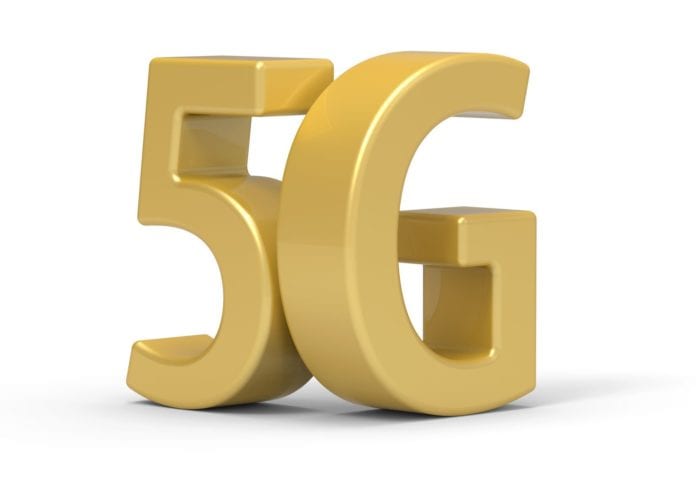3GPP brought us a step closer to achieving the ambitious vision of 20Gbps data rates for mobile wireless with the completion of the non-Standalone (NSA) part of Release 15 in December last year. The systems that mobile operators will need to use to realize 20Gbps downlink and 10Gbps uplink speeds for enhanced Mobile Broadband (eMBB) services will need to utilize the much wider bandwidths only available at mmWave frequencies.
Propagation and penetration losses are significantly higher at mmWave frequencies, however. System designers have known for some time that the best way to overcome this loss in link budget is with electrically steerable high-gain antennas. Leaders in the mobile ecosystem are designing and proving systems using these antennas with advanced beamforming techniques to ensure the proper signal level received by a device. The improved signal quality helps overcome the high path loss and improves connectivity to cell-edge users.
mmWave devices utilizing such active antenna arrays cannot be tested using traditional conducted cables and connectors. The high level of radio and antenna integration means that much of this testing must be performed Over The Air (OTA). A lab-based OTA test set-up consists of a chamber (typically anechoic) and well as equipment to generate controllable mmWave signals for a transmitter and to analyze transmitted signals captured by probe antennas.
“In RF cellular bands below 6 GHz, which we know so well, we focused on optimizing the signal quality. With mmWave 5G, we have the added task of ensuring we know where the signal is.” said Lucas Hansen, Senior Director for 5G & Chipset Business Segment at Keysight Technologies. “The concept of “beam management” will represent significant new challenges and Keysight has collaborated early with industry leaders to prepare solutions to enable the whole ecosystem.”
Hansen is referring to the testing challenges in the context of new procedures for beamforming and beam management being introduced in 3GPP 5G NR specifications. There are additional changes in the physical and MAC layers including the frame structure, new reference signals as well as scheduling and transmission modes to support the eMBB use case. Complicating these are the seemingly endless band combinations (over 500) introduced by 5G NR coexistence with 4G, 802.11, and unlicensed spectrum. These create added problems such as uplink and downlink signaling coordination, power transmission, coexistence and interference, and mobility between legacy wireless technologies and NR. This is why chipset, device, and network equipment manufacturers and their mobile operator customers need the latest tools that enable their designers easily explore new signals, scenarios and topologies.
To accelerate 5G development and test while keeping up with the evolving standards, designers rely on solutions that enable them to streamline the 5G modem and device R&D workflow and verify advanced 5G features such as beamforming across the global spectrum requirements – from sub-6 GHz to mmWave. Using a common and scalable software platform across a unified 5G development toolset helps the device ecosystem seamlessly connect workflows, share insights, and speed time to market.
At MWC 2018, Keysight was first, together with Qualcomm, to demonstrate download speeds of 4Gbps using the industry’s first 5G NR ready network emulation and OTA device test solution with a 5G mobile test device powered by the Qualcomm® Snapdragon™ X50 5G modem chipset. These multi-gigabit speeds were achieved by aggregating eight 100MHz carriers in the 28GHz mmWave radio spectrum. The solution incorporates Keysight’s 5G Protocol R&D and RF Design Verification Toolsets for chipsets and devices that enable the user to validate their designs from the physical layer up through the higher layers of the air interface; allowing validation of protocol layers, RF performance, and key performance indicators using network emulation, channel emulation, and OTA solutions.
Watch Lucas Hansen show the live demo of the world’s first 4Gbps data connection using Keysight’s industry-first end-to-end mmWave OTA test solution and Qualcomm’s X50 5G modem chipset.
To learn more about address challenges using NR ready OTA testing solutions, click here to read Keysight’s White Paper on ‘OTA Test for mmWave 5G NR Devices and Systems’ and its Application Note on ‘Testing 5G: Data Throughput’.

